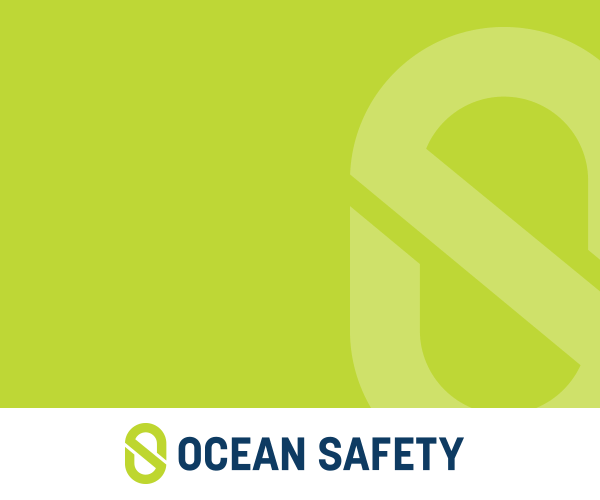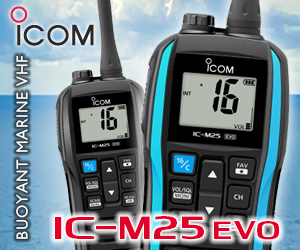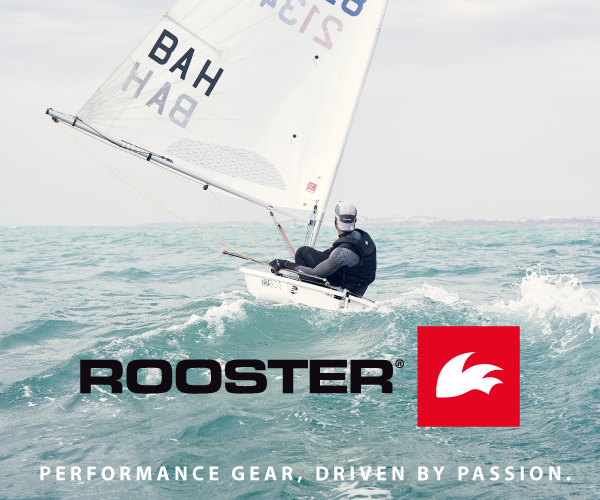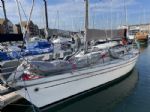











Boats for sale
| Rossiter Pintail Mortagne sur Gironde, near Bordeaux |
 |
| Laser 28 - Excellent example of this great design Hamble le rice |
 |
List classes of boat for sale |
Leeward Mark |
Post Reply 
|
Page 12> |
| Author | ||||
moomin 
Groupie 
Joined: 19 Jan 05 Online Status: Offline Posts: 60 |
 Post Options Post Options
 Quote Quote  Reply Reply
 Topic: Leeward Mark Topic: Leeward MarkPosted: 19 Dec 13 at 1:23pm |
|||
IMO not always, I like the extra tactics, problems, scenarios racing with different boats throws up. Spotting the situation you found yourself in early and dealing with it better than your competitors for me is part of the race.
Single class racing is, of course, the best way of deciding who was fastest round the race course but for me that's not everything!
|
||||
|
Moomin
|
||||
 |
||||
giraffe 
Posting king 
Joined: 10 May 07 Online Status: Offline Posts: 148 |
 Post Options Post Options
 Quote Quote  Reply Reply
 Posted: 18 Dec 13 at 9:38pm Posted: 18 Dec 13 at 9:38pm |
|||
|
Thanks for the comments
It was a "busy" leg and i think my key learning is that I did not have a handle on the 3 lengths scenario. I had positioned myself on the inside for the impending rounding apart from being exposed to someone coming back from the left hand side of the course. I felt that I could manage any starboard tacker by luffing up behind them to maintain my inside position. I guess sailing is better when you are racing against boats which sail similar angles to you. |
||||
 |
||||
Brass 
Really should get out more 
Joined: 24 Mar 08 Location: Australia Online Status: Offline Posts: 1151 |
 Post Options Post Options
 Quote Quote  Reply Reply
 Posted: 17 Dec 13 at 10:04pm Posted: 17 Dec 13 at 10:04pm |
|||
What Jim has said. If an assy boat is tacking downwind and passes ahead of you, that's usually because she is making better vmg to the mark than you are. If Yellow crosses ahead of Blue (you), hot on starboard, Blue should usually expect Yellow to be able to gybe back onto port and then cross clear ahead again. Blue's best tactic is probably to hold her deep downwind course until if and when Yellow comes back at her, then do whatever is best to keep clear if it becomes apparent that that Yellow has come back slower than expected and it is necessary for Blue to do something to keep clear.
|
||||
 |
||||
JimC 
Really should get out more 

Joined: 17 May 04 Location: United Kingdom Online Status: Offline Posts: 6661 |
 Post Options Post Options
 Quote Quote  Reply Reply
 Posted: 17 Dec 13 at 6:40pm Posted: 17 Dec 13 at 6:40pm |
|||
|
If you try and duck inside a boat that's entitled to mark room its always at your own risk. See Case 63 in the case book. http://www.sailing.org/tools/documents/20132016ISAFCaseBook-[14819].pdf. In that situation I reckon you'll always come out having to do turns unless the boat ahead stuffs up their mark rounding.
|
||||
 |
||||
ColPrice2002 
Far too distracted from work 
Joined: 25 Nov 08 Location: United Kingdom Online Status: Offline Posts: 222 |
 Post Options Post Options
 Quote Quote  Reply Reply
 Posted: 17 Dec 13 at 4:09pm Posted: 17 Dec 13 at 4:09pm |
|||
|
Thamks, Jim,
But 18.4 only applies to an inside boat overlapped. In the example above, the boat clear ahead has (I think) deliberately gone wide of the mark, dropped spinnaker/genniker and then gybed back. As Blue, would you follow Yellow wide (so as to keep clear of the boat that was clear ahead), take the risk and head for the mark, or argue that Yellow was now sailing away from the mark? Cheers, Colin |
||||
 |
||||
JimC 
Really should get out more 

Joined: 17 May 04 Location: United Kingdom Online Status: Offline Posts: 6661 |
 Post Options Post Options
 Quote Quote  Reply Reply
 Posted: 17 Dec 13 at 11:42am Posted: 17 Dec 13 at 11:42am |
|||
|
Colin, 18.4 may kick in here, which may limit how far from the mark yellow can sail.
But basically 95% of this is just like any other mark rounding, and people get their heads needlessly in a twist because one boat has a pole kite. It doesn't make any difference whether yellow has a pole kite or is a singlehander that has followed a gust off to one side of the track and come in from the side to get rights on a big bunch of boats that were ahead... And because its just like any other rounding its all the same as regards multiple overlapped boats and all the rest of it. |
||||
 |
||||
ColPrice2002 
Far too distracted from work 
Joined: 25 Nov 08 Location: United Kingdom Online Status: Offline Posts: 222 |
 Post Options Post Options
 Quote Quote  Reply Reply
 Posted: 17 Dec 13 at 11:11am Posted: 17 Dec 13 at 11:11am |
|||
|
I'm having a few problems with this one!
Assuming that the assymetric was clear ahead, then Blue has to keep clear - however, if Yellow dives off to leeward (away from the mark), does Blue have to go wide of the mark to keep clear? (and call for additional mark room on the boats overlapped outside her) Tactically, if I were blue, I'd luff up and head for the mark - assuming that Yellow point higher to shut me out. Any other thoughts on how to hadle that event? Colin |
||||
 |
||||
jeffers 
Really should get out more 

Joined: 29 Mar 04 Location: United Kingdom Online Status: Offline Posts: 3048 |
 Post Options Post Options
 Quote Quote  Reply Reply
 Posted: 17 Dec 13 at 7:05am Posted: 17 Dec 13 at 7:05am |
|||
|
Great explanation by Brass above (as always).
This is why assymetric boats usually choose to approach a leeward mark on whichever tack gives them the inside overlap as they are almost certainly going to be overlapped at the zone on boats running DDW. Once you understand that you can plan ahead and avoid them whilst protecting your own position.
|
||||
|
Paul
---------------------- D-Zero GBR 74 |
||||
 |
||||
Brass 
Really should get out more 
Joined: 24 Mar 08 Location: Australia Online Status: Offline Posts: 1151 |
 Post Options Post Options
 Quote Quote  Reply Reply
 Posted: 16 Dec 13 at 11:19pm Posted: 16 Dec 13 at 11:19pm |
|||
|
The starting point is understanding when boats in this situation are overlapped. See Definitions Clear Astern and Clear Ahead; Overlap
So, as is usually the case with boats approaching a leeward mark on opposite tacks, both boats are sailing more than ninety degrees from the true wind, the definition of overlapped applies and they will probably be overlapped. Whether boats are overlapped, clear ahead or clear astern, when the first of them reaches the zone is what determines the entitlement to mark-room. So, looking at the diagram @1 and @2, both boats are sailing below 90 degrees to the true wind, neither is clear astern of the other, so they are overlapped. @3 boats are still overlapped: B is not clear astern of the line drawn through Y's transom. @4, Y is clear ahead of B. @5, Y and B are once again overlapped. So, applying rule 18.2( b ). If Y reaches the zone @3 (Zone Boundary #1 in the diagram), then she has reached the zone overlapped inside B, and is entitled to mark-room, and any future gybes or changes in clear ahead/astern or overlap will not affect this entitlement. If Y reaches the zone @4 (Zone Boundary #2 in the diagram), then she she has reached the zone clear ahead of B and again is entitled to, and retains mark-room. If Y reaches the zone @5, she reaches the zone first, overlapped to leeward outside B, and B, as inside boat is entitled to mark-room, and as before any future gybes or changes in clear ahead/astern or overlap will not affect this entitlement. So to answer your specific questions. 1. If the other boat gybed within 3 lengths of the leeward mark do I have any rights? The issue is not whether the other boat gybed in the zone, but whether or not she reached the zone clear ahead or overlapped inside you, but if the other boat gybes in the zone, probably the situation illustrated by either Zone Boundary 1 or 2 above applied and you would be required to give the other boat mark-room. 2. If the other boat has not yet made 3 lengths when I become overlapped on him do I have rights? If the other boat gybed outside the zone and you were overlapped inside her when the first boat reached the zone, then you were entitled to mark-room. 3. How does the benefit of the doubt work here? Due to the angles we were sailing the other boat only became closest to the buoy just before I rounded behind it. I think once you understand about boats on opposite tacks being overlapped, there's not much doubt about the issue of which is inside boat. The test if NOT 'which boat is closest to the mark'. Consider two boats approaching a gybe mark on a beam reach, with the trailing boat only just overlapped bow to stern to leeward of the leading boat when the leading boat reaches the zone: leeward is quite a distance further from the mark than windward, but she is clearly the inside boat. It can probably be said, for boats, overlapped approaching a leeward mark, if the mark is to be rounded to port, the boat on the other boat's port side will be the inside boat and vice versa for a starboard mark. |
||||
 |
||||
JimC 
Really should get out more 

Joined: 17 May 04 Location: United Kingdom Online Status: Offline Posts: 6661 |
 Post Options Post Options
 Quote Quote  Reply Reply
 Posted: 16 Dec 13 at 9:45pm Posted: 16 Dec 13 at 9:45pm |
|||
Here's how I see it... RRS10 He (H) has ROW over Y (You)
H is clear ahead
H owes Y room to keep clear (16.1)
*Unless* RRS18 changes anything. I reckon this is all about when H entered the zone and when Y became overlapped. If H was still clear ahead when he entered the zone Y owes him mark room. (18.2.b) If there is uncertainty over whether or not H was clear ahead on entering the zone then its presumed H was (18.2d) If Y was overlapped and inside when H entered the zone then H owes Y mark room unless its not possible for H to give mark room (18.2b, 18.2d) |
||||
 |
||||
Post Reply 
|
Page 12> |
| Forum Jump | Forum Permissions  You cannot post new topics in this forum You cannot reply to topics in this forum You cannot delete your posts in this forum You cannot edit your posts in this forum You cannot create polls in this forum You cannot vote in polls in this forum |
Bulletin Board Software by Web Wiz Forums® version 9.665y
Copyright ©2001-2010 Web Wiz
Change your personal settings, or read our privacy policy
Copyright ©2001-2010 Web Wiz
Change your personal settings, or read our privacy policy












 Printable Version
Printable Version Delicious
Delicious Digg
Digg Facebook
Facebook Furl
Furl Google
Google MySpace
MySpace Newsvine
Newsvine reddit
reddit StumbleUpon
StumbleUpon Twitter
Twitter Windows Live
Windows Live Yahoo Bookmarks
Yahoo Bookmarks Topic Options
Topic Options